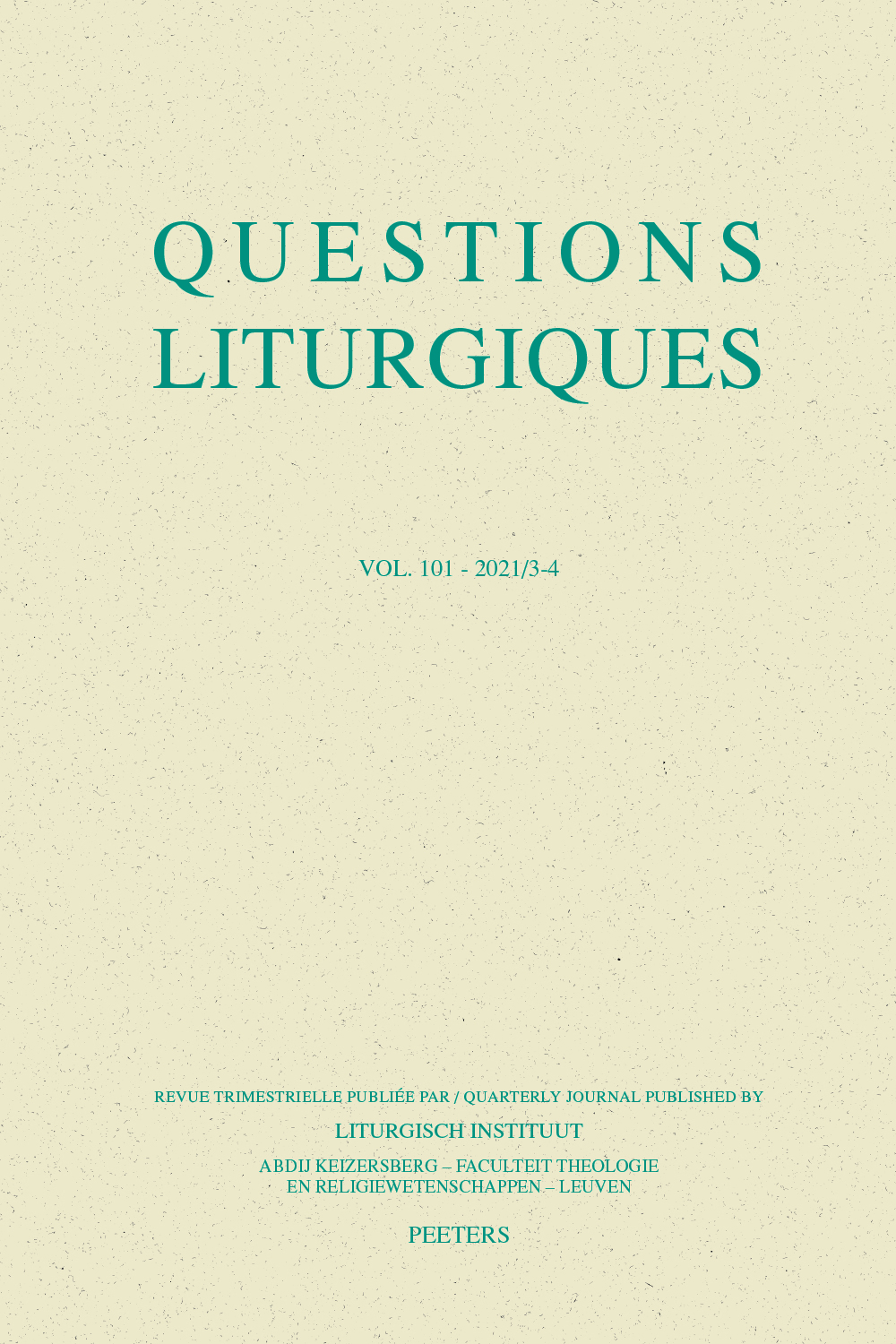 previous article in this issue previous article in this issue | next article in this issue  |

Preview first page |
Document Details : Title: Un discours anonyme (CPG 4739) Subtitle: Témoin d'une tradition homilétique pour l'ascension Author(s): GRELIER DENEUX, Hélène Journal: Questions Liturgiques/Studies in Liturgy Volume: 92 Issue: 4 Date: 2011 Pages: 282-323 DOI: 10.2143/QL.92.4.2164149 Abstract : Le présent article propose une traduction annotée et une analyse littéraire, exégétique et doctrinale de l’homélie sur l’ascension pseudo-chrysostomienne CPG 4739. Par des enquêtes lexicales, selon une méthode comparative avec le corpus homilétique en l’honneur de la même solennité et d’autres textes doctrinaux, l’étude vise à montrer que les arguments de C. Baur pour justifier l’attribution de ce texte à Nestorius ou au milieu nestorien, s’ils sont un point de départ louable, sont fragiles et très partiels. La réalité des discussions théologiques, où les mêmes termes techniques et arguments sont utilisés successivement par les différentes générations d’adversaires dans des contextes variés, révèle que les simples rapprochements lexicaux ou le choix des citations scripturaires très débattues ne sauraient constituer un critère d’attribution exclusif et décisif. La critique interne peut amener à poser l’hypothèse plus prudente d’un texte appartenant au milieu antiochien du Ve s. This article offers an annotated French translation with literary, exegetical, and doctrinal analysis of a Pseudo-Chrysostomian homily on the Ascension (CPG 4739). On the basis of lexical investigation, especially comparisons with other Ascension sermons as well as with texts of a doctrinal content, this study aims to demonstrate that while the arguments of C. Baur, who attributed this text to Nestorius or to a Nestorian milieu, constitute a commendable point of departure, they are nonetheless fragile and rather incomplete. The reality of theological discussions, in which successive generations of opposing parties employed the same arguments and technical terms in different contexts, reveals that simple lexical parallels or the selection of much debated scriptural quotations should not constitute the exclusive and decisive criteria of attribution. An approach which rests on internal criticism of the text leads to the more careful hypothesis that this text belongs to a fifth-century Antiochene milieu. |
|


